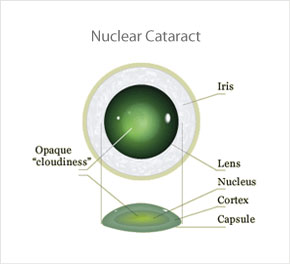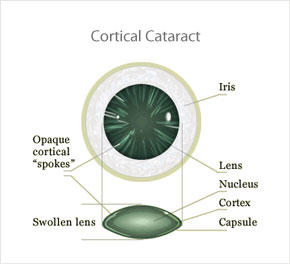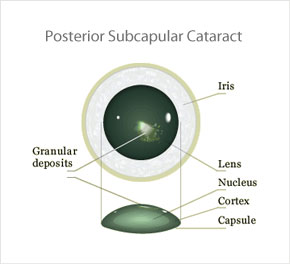About Cataracts
Types of Cataracts
To understand exactly how and why a cataract forms, you first need to know what kind of cataract it is. Following is a breakdown of the 3 most common.
Nuclear Cataracts

The most common type, nuclear cataracts are associated with nearsightedness, blurry vision, and faded colors. As a nuclear cataract develops, the eye's lens becomes more curved and worsens nearsightedness, sometimes temporarily improving farsightedness but not for long.
Attributed as a consequence of natural aging, there are several reasons why nuclear cataracts form.
- Just as skin sheds, so does the eye. But since cells can’t be lost into the air inside the eye, they deposit into the lens, causing it to thicken and yellow.
- Likewise, with aging, fewer nutrients reach the inner eye, contributing to the formation of an opaque nucleus.
- Overexposure to ultraviolet light can also contribute, especially as the lens becomes harder, less resilient, and more opaque over time.
- Several studies have also linked alcohol and exposure to cigarette smoke as cataract contributors.
- Some systemic disorders, such as hypothyroidism (an underactive thyroid disease), diabetes, and in rare cases, glaucoma, can lead to cataracts as well.
Cortical Cataracts

Often associated with farsightedness and natural aging, cortical cataracts are less common and tend to develop in their own unique way.
- They form when the shell, or cortex, of the lens becomes hard after developing post-birth and grows, usually till around age 60, when nearly 16 percent of the lens has become cortex.
- Cortical production makes the lens more compact and hard, or sclerotic.
Posterior Subcapsular Cataracts

Posterior subcapsular cataracts are even less common but affect vision more than any other type and tend to affect people under age 40 more often.
Since light converges at the back of the lens, extreme sensitivity to bright lights normally develops and reading can be extremely difficult.